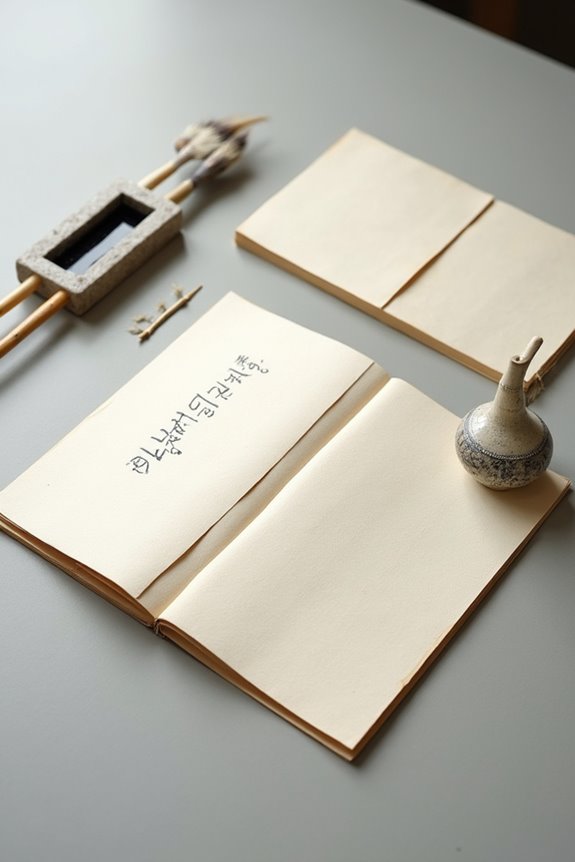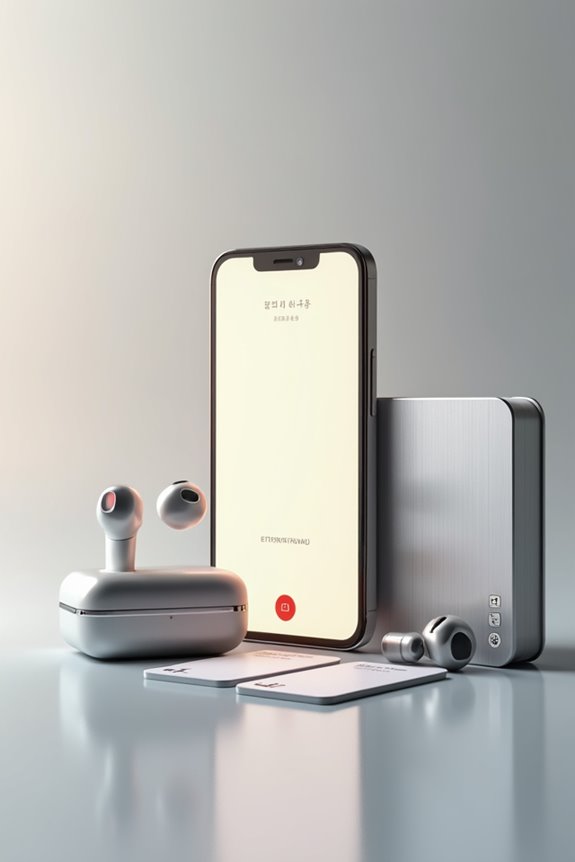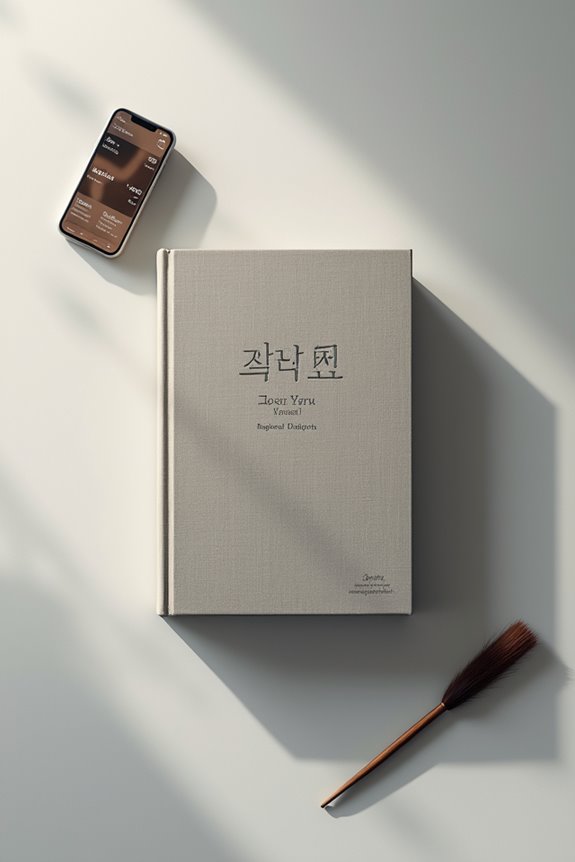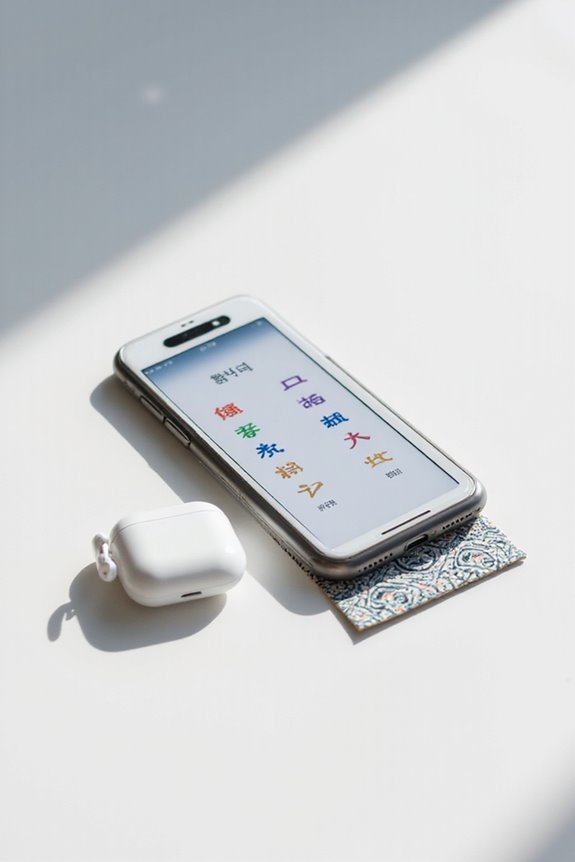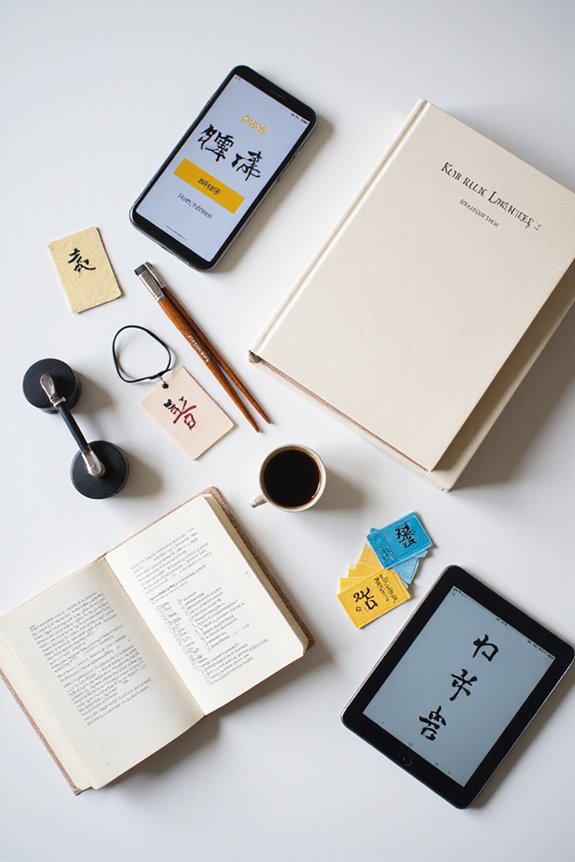Korean calligraphy practice pads are essential tools for developing brush control and character formation in learners of all skill levels. Made primarily from traditional hanji paper, these pads feature pre-printed grids that guide the formation of Hangul and Hanja characters. Their high absorbency prevents ink pooling, while the smooth yet textured surface aids in stroke precision. These pads not only support structured practice but also foster cultural appreciation and artistic expression in this traditional art form. You may discover additional insights ahead.
Key Takeaways
- Korean calligraphy practice pads are tools designed for mastering character formation in Korean calligraphy.
- Made from traditional hanji paper, they feature pre-printed grids for structured practice.
- The pads enhance brush control, stroke pressure, and balance across various skill levels.
- They help cultivate patience and focus, promoting an effective environment for skill improvement.
- Available in multiple sizes and formats, these pads cater to both physical and digital practice preferences.
Definition and Purpose of Korean Calligraphy Practice Pads
Korean calligraphy practice pads are essential tools meticulously created for individuals aiming to master the art of Korean calligraphy. These pads consist of specially designed sheets made from *hanji*, traditional Korean mulberry paper. This paper absorbs ink well and showcases vibrant colors, making it ideal for practicing various calligraphy techniques. The pads feature pre-printed grids that guide both beginners and experienced enthusiasts, helping us form consistent characters. They enable us to cultivate brush control, stroke pressure, and balance, fundamental to creating harmonious compositions. Additionally, these practice pads support the systematic progression from basic strokes to advanced artistic expression, allowing us to reflect our personal styles while honoring traditional methods.
Characteristics of Effective Practice Pads
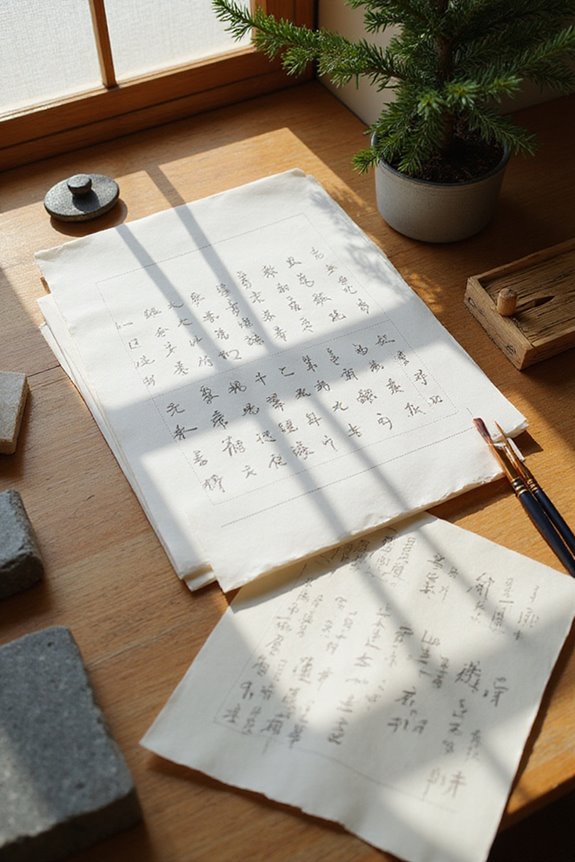
When selecting effective practice pads for calligraphy, several characteristics greatly impact our learning experience and skill development. High absorbency is crucial, as it prevents ink pooling and smudging, enabling clear, precise strokes. Traditional hanji paper excels in this regard, offering excellent ink absorption without bleeding. Additionally, a smooth yet slightly textured surface promotes brush control, accommodating the flexibility of our calligraphy brushes. This texture helps us master essential stroke techniques by managing brush friction during practice. Effective pads also feature adequate size for practicing entire characters and guidelines for proportionality. Finally, they should facilitate both traditional and modern calligraphy techniques, ensuring versatility with various inks, thereby enriching our artistic expression and skill acquisition.
Materials Used in Calligraphy Practice Pads
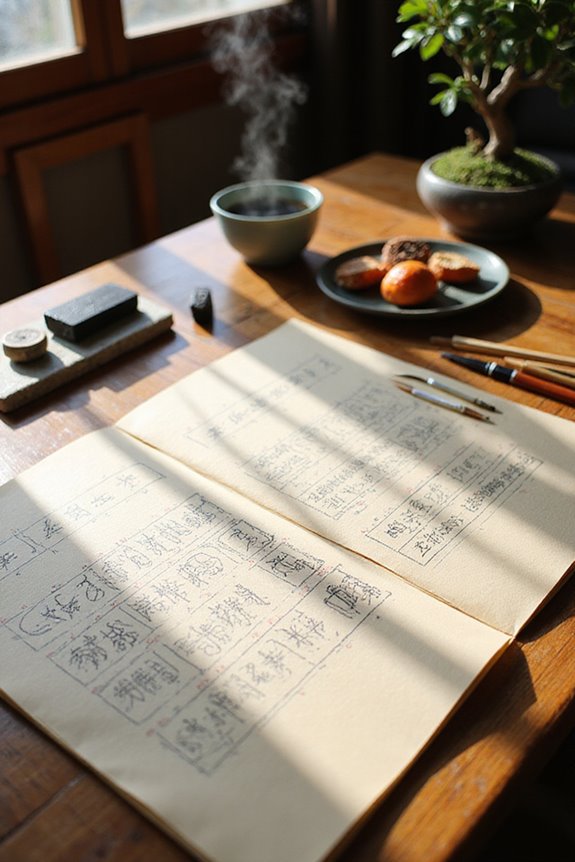
Selecting suitable materials for calligraphy practice pads is essential for our learning journey. The primary paper used is Hanji, known for its unique properties, such as durability and excellent ink absorption. This high-quality paper, made from mulberry trees, can endure the pressures of ink application, ensuring a smooth writing experience. Typically, we find Hanji paper in various sizes, allowing for versatility in practice. When choosing brushes, we often opt for those made from weasel fur, which provides the softness needed for precise strokes. The ink we use, whether traditional or modern, is ground on an inkstone, integrating seamlessly with the Hanji surface. Together, these materials enhance our calligraphy practice and support our artistic development.
Traditional Versus Modern Korean Calligraphy Tools

While exploring the domain of Korean calligraphy tools, it’s important to recognize the distinctions between traditional and modern options. Traditional materials, such as ink sticks, inkstones, and brushes made from animal hair, showcase the artistry and craftsmanship that have been perfected over centuries. These tools embody cultural significance, highlighting techniques that have shaped Korean calligraphy. In contrast, modern convenience offers pre-made ink and durable synthetic brushes, making the art form more accessible for beginners and hobbyists. This shift allows for increased artistic freedom, with a wider range of styles and themes available. Ultimately, both traditional and modern tools play essential roles in the evolving landscape of Korean calligraphy, each contributing unique values to the practice.
Benefits of Using Practice Pads

Utilizing practice pads in our Korean calligraphy journey offers numerous advantages that enhance both skill development and overall enjoyment of the art form. First, these pads promote focus techniques by requiring our full attention to detail, which naturally cultivates patience over time. This sustained concentration often leads to a meditative state, greatly benefiting our mental clarity. Furthermore, practice pads act as an effective means of stress management; the calming process of creating strokes can relieve tension similar to meditation. Consequently, we often feel mentally refreshed after each session. Additionally, the structured environment of practice pads allows us to engage in productive drills, fostering muscle memory and improving brush control for more intricate letterforms as we progress.
Different Sizes and Formats of Practice Pads
When considering different sizes and formats of Korean calligraphy practice pads, we find various options tailored to diverse learning needs and preferences. The most common size variations include A4 and B5, which mimic traditional hanji dimensions, suitable for both Hangul and Hanja practice. For those seeking compact options, A6 and B6 pads are occasionally available, offering portability during travel. Format preferences vary from physical pads, typically bound with multiple pages, to digital downloads that can be resized at home. Most digital formats allow potential users to print custom sizes, enabling flexibility. Additionally, specialty pads might provide unique grid patterns, enhancing alignment and structure for advanced calligraphers or beginners alike. Choose based on your specific practice requirements.
Ink Compatibility and Preventing Smudging
Understanding ink compatibility and smudging prevention is essential for achieving ideal results in Korean calligraphy. We find that ink viscosity plays a significant role; thicker inks may smudge less but can be difficult to control, while thinner inks flow smoothly but might lead to smudging. The paper interaction also affects how ink behaves. High-quality papers with a smooth finish can help reduce smudging by allowing ink to absorb evenly, which is often critical for maintaining clarity in our strokes. We recommend using quick-drying inks, such as those from Wearingeul, to minimize smudging. Additionally, mastering brush techniques helps manage ink flow, allowing us to maintain control while creating our calligraphic masterpieces.
Incorporating Practice Exercises and Guides
Incorporating practice exercises and guides is essential for anyone looking to master Korean calligraphy, as these resources provide structured pathways to skill improvement. To enhance our practice techniques, we can start with basic strokes, such as straight lines, ensuring we maintain consistent stroke thickness. Structured workbooks, like the Korean Hangul Writing Practice Workbook, offer valuable exercises and practice grids that facilitate style development. Additionally, online resources, including videos and printable sheets, allow us to further refine our skills and access diverse techniques. Establishing a regular practice routine helps cultivate muscle memory, and sharing our work within a community enables us to draw inspiration from different handwriting styles, ultimately contributing to our artistic expression and unique calligraphy styles.
The Role of Mobility in Calligraphy Practice
Mobility plays an essential role in our practice of Korean calligraphy, as it directly influences the precision and fluidity of our strokes. Utilizing effective mobility techniques, we learn to control our brush through proper posture and deliberate movement from our shoulders and elbows. By maintaining a steady hand while adjusting the paper, we achieve consistency in stroke dynamics. Practicing basic strokes enables us to master variations in line thickness and speed, which are vital for expressive results. In addition, mastering reverse strokes increases our mobility, ensuring crisp lines and clean endings. As we advance, adapting our hand rotation helps create dynamic and varied strokes, showcasing our developing skills and enhancing our overall artistic expression in calligraphy.
Cultural Significance of Korean Calligraphy
Korean calligraphy, deeply intertwined with our cultural identity, serves as an essential means of artistic expression that transcends mere writing. It reflects our cultural heritage, highlighting the influence of Confucian and Buddhist philosophies in shaping its forms. Historically, Korean calligraphy not only served aesthetic purposes but also contributed greatly to literature and governance, exemplifying a society’s intellectual legacy. Renowned calligraphers, such as Kim Saeng and Ch’oe Ch’i-wŏn, elevated this art form, showcasing its importance in our identity. Over time, Korean calligraphy evolved through various styles, from traditional Hanja to modern Hangul forms. Today, practicing this discipline remains a valued pursuit that fosters a deeper connection to our rich cultural history and artistic expression.
Frequently Asked Questions
Where Can I Buy Korean Calligraphy Practice Pads?
We can find Korean calligraphy practice pads at local stores and online marketplaces. Our best bets include specialty calligraphy shops and larger retailers, where a variety of options are available to suit our needs.
How Do I Clean My Brushes After Using Practice Pads?
After using our practice pads, we should prioritize brush maintenance. Let’s use gentle cleaning techniques, rinsing immediately with lukewarm water, and reshaping the bristles to guarantee they stay in great condition for our next session.
Can I Use Watercolor on Calligraphy Practice Pads?
While we can experiment with watercolor techniques on calligraphy practice pads, they aren’t designed for that. Mixing calligraphy mediums might yield unique textures but could compromise overall control and results compared to dedicated watercolor paper.
What Is the Best Age to Start Learning Korean Calligraphy?
We believe starting Korean calligraphy around ages 6-8 supports child development and artistic expression. This age range enhances fine motor skills, encourages creativity, and aligns with their growing understanding of language and expression.
How Often Should I Practice to Improve My Calligraphy Skills?
To improve our calligraphy skills, we should practice daily. Even short sessions of 10 to 30 minutes are effective. Consistency’s key—let’s build a routine and watch our skills grow steadily over time.

